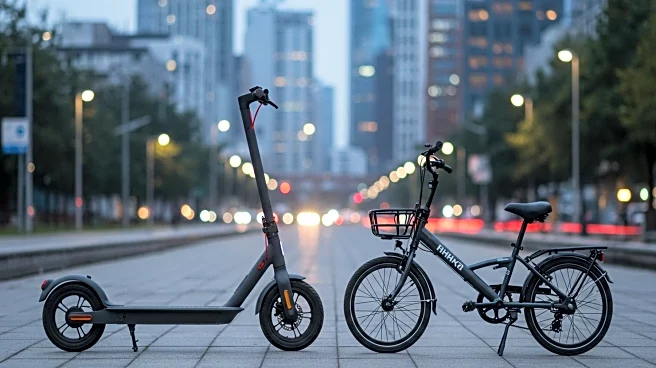Rapid Read • 9 min read
Shared micromobility systems, including bike- and scooter-share programs, are experiencing significant growth across North America. According to the sixth annual Shared Micromobility State of the Industry Report by the North American Bikeshare and Scootershare Association (NABSA), ridership increased by 31% in 2024 compared to 2023, with a 32% rise in the United States. The report highlights the integration of micromobility into public transportation ecosystems, with 415 cities in North America hosting these systems, 354 of which are in the U.S. The growth is attributed to increased investment in fleets, making vehicles more accessible and encouraging usage. Electric bicycles are becoming a larger part of these fleets, with 79% of systems including e-devices and 66% of trips utilizing them. The industry is maturing, with micromobility systems offsetting 101 million pounds of greenhouse gas emissions by replacing car trips.
AD
The expansion of shared micromobility systems is crucial for urban transportation, offering a sustainable alternative to car travel and reducing greenhouse gas emissions. This growth supports the development of infrastructure for riding, parking, and recharging devices, aligning with public transit systems. The increased use of electric bicycles and scooters reflects a shift towards environmentally friendly transportation options. The report indicates that 35% of micromobility trips replace car trips, highlighting the potential for significant environmental benefits. Furthermore, 74% of riders use these systems to connect to transit, demonstrating their role in enhancing public transportation networks. The industry's growth underscores the need for continued investment and collaboration between operators and municipalities to ensure long-term sustainability.
Industry officials are advocating for more public-sector investment in micromobility infrastructure and operations. Successful programs require collaboration between operators and cities to address gaps and ensure sustainability. As the industry matures, there is a push for increased capital investment to support growth and integration with existing transportation systems. The report suggests that agencies and operators need to work closely to identify support needs and develop strategies for continued expansion. This collaboration is essential for maintaining the momentum of growth and maximizing the environmental and transportation benefits of shared micromobility systems.
The growth of shared micromobility systems may influence urban planning and policy decisions, encouraging cities to prioritize sustainable transportation options. The integration of micromobility with public transit could lead to shifts in commuting patterns and reduce reliance on personal vehicles. Additionally, the environmental benefits of these systems may drive further investment in green technologies and infrastructure. As cities adapt to these changes, there may be broader cultural shifts towards embracing alternative transportation modes and reducing carbon footprints.
AD
More Stories You Might Enjoy












